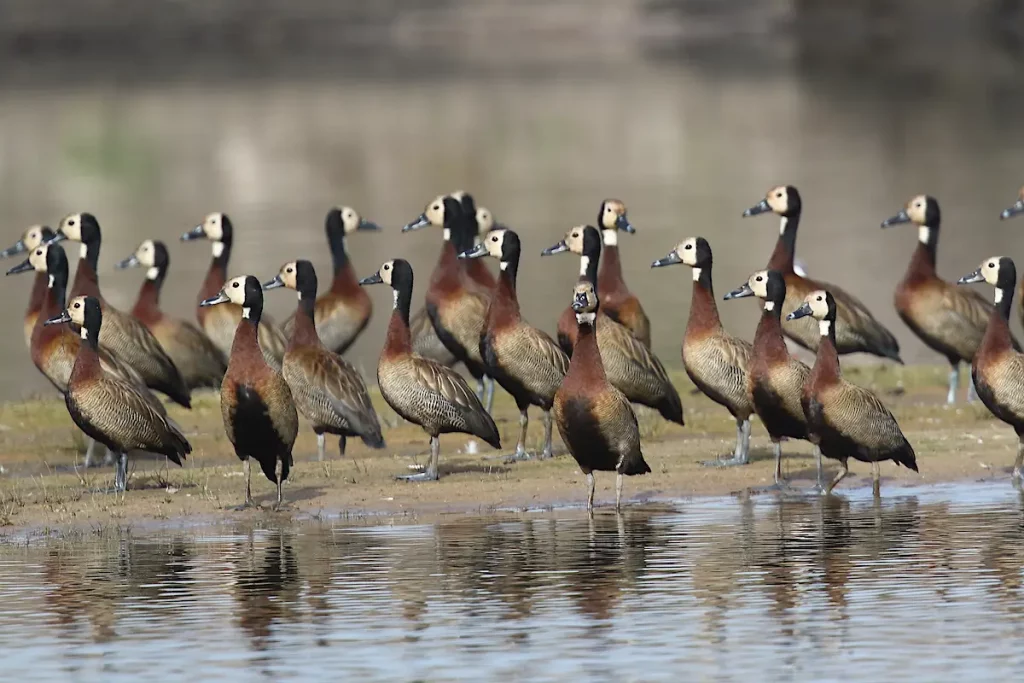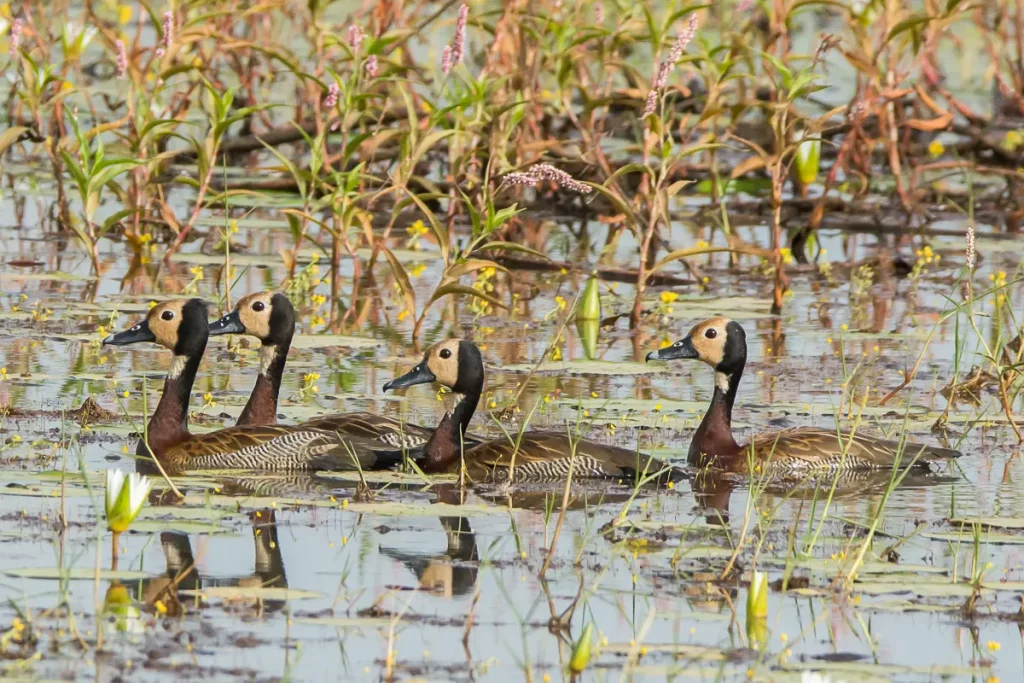The White-faced whistling duck is so named because of its white face and its loud whistle-like call. The ducks in the pictures below have cream-coloured faces due to staining from the muddy water.
Bird information.
Where can we see a White-faced whistling duck?
These ducks were photographed at our newly formed water park, a short walk from Footsteps. Otherwise, you would find them in still freshwater lakes or reservoirs, with good vegetation
What does it look like?
The white-faced whistling duck has a long grey bill, a long head, and longish legs. It has a black neck and head, and a distinctive white face that gives them its name, though the amount of white colour visible has regional variations among the species. For example, the white-faced whistling ducks with more black colouration are commonly found in western Africa where rainfall supersedes the dry season. The back and wings are dark browns to black, and the underparts are black with fine white barring on the flanks. The neck is chestnut. Males and females have similar plumage. Juveniles are similar in colour to adults but have a much less contrasting head pattern. Source Wikipedia
What does it feed on?
They feed on plants and seeds.
Want to know an interesting Factoid?
Is one of the species to which the Agreement on the Conservation of African-Eurasian Migratory Waterbirds (AEWA) applies.
How does it sound?
They have a clear, distinctive and loud three-note whistling call.


